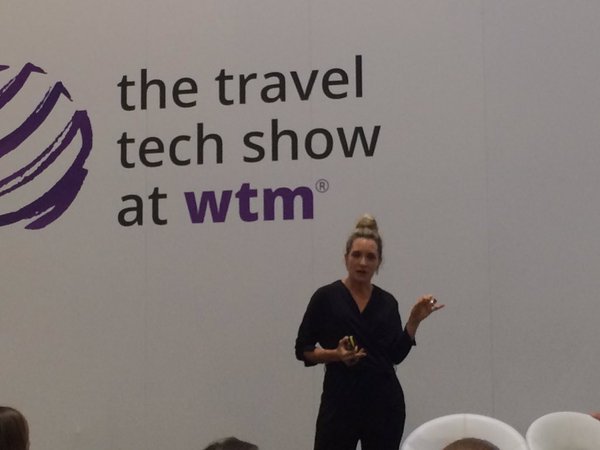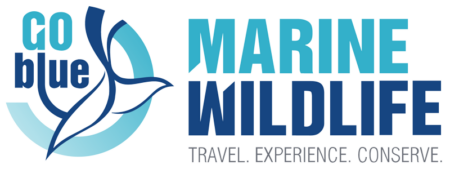 I was recently at World Travel Market (WTM) in London . WTM is considered the industry’s top showcase of travel products.
I was recently at World Travel Market (WTM) in London . WTM is considered the industry’s top showcase of travel products.
Travel continues to outperform other sectors despite uncertain global economic growth, rising geopolitical unrest, volatile oil prices and rising interest rates. Global arrivals exceeded 1.1 billion in 2014, up by 4,3% compared with the previous year with growth for 2015 forecast at 3,7%.
 Mobile bookings have gone mainstream, accounting for some US$96 billion travel sales globally in 2014; expenditure is on the rise; and emerging markets like China are showing significant increases in disposable incomes.
Mobile bookings have gone mainstream, accounting for some US$96 billion travel sales globally in 2014; expenditure is on the rise; and emerging markets like China are showing significant increases in disposable incomes.
But what are the key drivers of this trend and what can marketers look at to survive in this increasingly competitive space?
 1. The new American dream – work less, play hard
1. The new American dream – work less, play hard
Americans have little to no annual leave. An annual survey by Expedia in 2014 showed that 54% of US citizens feel ‘holiday-deprived’. Forward-thinking US companies have begun recognising the need for time to refresh but, for now, US holiday-makers of working age are likely to take last-minute and package holidays.
With trips likely to be spread throughout the year and with the current exchange rate, South Africa stands to benefit from American travel and should look online to reach this Internet-savvy market.
 Experience is everything and the traveller is looking for instant and total immersion. Key to our strategy is the engagement of online influencers and media to educate American holiday-planners about the non-safari side of South Africa through experiential story-telling and a personal lens, by Americans, on their experience of the destination.
Experience is everything and the traveller is looking for instant and total immersion. Key to our strategy is the engagement of online influencers and media to educate American holiday-planners about the non-safari side of South Africa through experiential story-telling and a personal lens, by Americans, on their experience of the destination.

2. Hipster holidays
“The trend is to be where it is at. So instead of concentrating all their activities around historic centres of cities, young, connected and hip travellers are now checking out what are the best areas for foodies and where creative people hang out, with participation (experience) being a huge part of their visit.” So says Ulane Vilumets, Founder of Like a Local.
 Always seeking the edgier neighbourhood and undiscovered adventures, hipsters look to social media and user-review sites to plan their trips.
Always seeking the edgier neighbourhood and undiscovered adventures, hipsters look to social media and user-review sites to plan their trips.
Neighbourhood travel is an exciting development for regions beyond the central hub; Stellenbosch thrives on its own identity of history, gourmet and artisanal food, rural landscape and ‘villagey’ town. The trend also spreads the economic benefits of tourism beyond its traditional ownership and entrepreneurs would do well to capture the imagination of young, hip travellers hungry for authenticity.

3. More on millennials and the new Generation Z-ers
Loosely defined as people born after the mid-1980s, millennials currently account for 217 million trips, a number expected to rise to 320 million in 2020.
Millennials (or Generation Y) travel more overall – on average 4.2 times a year (HVS Global Hospitality Services) than the 2.9 to 3.2 times per year for older generations – and 58% of millennials prefer travelling with friends.  Speed, adventure and bragging rights are big incentives for millennials, who also crave the freedom to make spontaneous decisions on holiday, and are tech natives with an eye on multiple apps and social platforms to curate their adventure.
Speed, adventure and bragging rights are big incentives for millennials, who also crave the freedom to make spontaneous decisions on holiday, and are tech natives with an eye on multiple apps and social platforms to curate their adventure.
A far cry from the penniless back-packer of youth travel gone by, the millennial is prepared to spend – not on souvenirs but on adventures and experiences.
 Millennials are our frontline marketers, driven by a desire to share their experiences on multiple platforms. Enabling this with free wireless and easy access to social details is a worthwhile investment for every tourism and tourism-related business. Keeping alert to what your visitors are saying about you on social media also generates honest feedback, a chance to fix problems and an instant, possibly enduring, relationship with customers.
Millennials are our frontline marketers, driven by a desire to share their experiences on multiple platforms. Enabling this with free wireless and easy access to social details is a worthwhile investment for every tourism and tourism-related business. Keeping alert to what your visitors are saying about you on social media also generates honest feedback, a chance to fix problems and an instant, possibly enduring, relationship with customers.
Hot on their heels come Generation Z, the 13- to 17-year-old digital natives who are driving decision making in the home through their mastery of technology and their unswaying pragmatic view of marketing. Authenticity is everything to this future-traveller – worth paying attention to right now.

4. Active, experiential travel People are opting for active holidays over relaxation focused holidays. In 2014 already it was revealed that cycling is the new golf with the rise of MAMILs (middle-aged-men-in-lycra).
2015 saw a considerable increase in bicycle tourism offered by destinations and, in August 2015, sustainable transport charity Sustrans estimated that cycling tourism added over £650 million to the UK economy each year.
In Stellenbosch, we have seen first-hand that the hunger for cycling is insatiable.

Cyclists, and other active travelers wanting to invest in healthy living and healthy holidays, want a balance of challenging, beautiful terrain and fine lifestyle, food and wine experiences.

5. Travel 3.0 and increased personalisation
Technology continues to transform the travel experience making it richer and more enjoyable on the basis of travelers’ personal preferences.
Customers now expect companies to know them better than their neighbors would and to engage with them in a very personalized way.
Thanks to mobile technology and big data analytic, travel companies can suggest interesting things for travellers to do at their location.

Suggestions will become increasingly personalised with online inventories of local travel services and activities helping to cross-check data on consumers’ preferences and their current location.
An example is Google Now, which aims to proactively bring consumers information before they ask, based on their past behaviour.
It’s another way to stand out in a highly cluttered and de-personalised world, its being acknowledged – even before you have arrived – which sets a positive perception into motion. It can’t be an automated message – it has to be about each customer in a way that really counts.

6. Food and drink travel
The WTM Global Trends Report 2014 reveals that in 2013, international and domestic tourists spent more than US$37 billion on food in France, with Italy next, netting more than US$25 billion. Germany, Sweden and Spain complete the top five food destinations.

Foodie travellers spend about 18-20% more in destinations and although food tourists do and will eat in restaurants, simple dining is not a food tourist’s goal. Food is a key experience driver and a gateway to several other insights about the culture and traditions of a destination.
Learning about a particular food or, even better, a regional food culture, is the big draw.

We have seen in Stellenbosch how the addition of an olive oil tasting, a walk through a herb garden, and dining with a local family can change a meal into a captivating experience. Innovating around what you have and taking the experience on to centre stage is essential to draw in the crowds and make these new connected, experience-hungry travellers the ambassadors for your story.

Closing snapshot
Fast-paced changes in travel can blur the more constant features. We need to recognize that travel has always been about the experience but now each individual’s experience is connected to the views and opinions of so many pairs of eyes. Travellers in-destination are all taking along a group of peers on their adventures. We have to help them spread the word by giving them highly visual, authentic and original experiences to share and rave about, not forgetting the free WiFi.
Article by Mariette Du Toit -Helmbold.
This article appeared in Tourism Update. 24 November 2015







